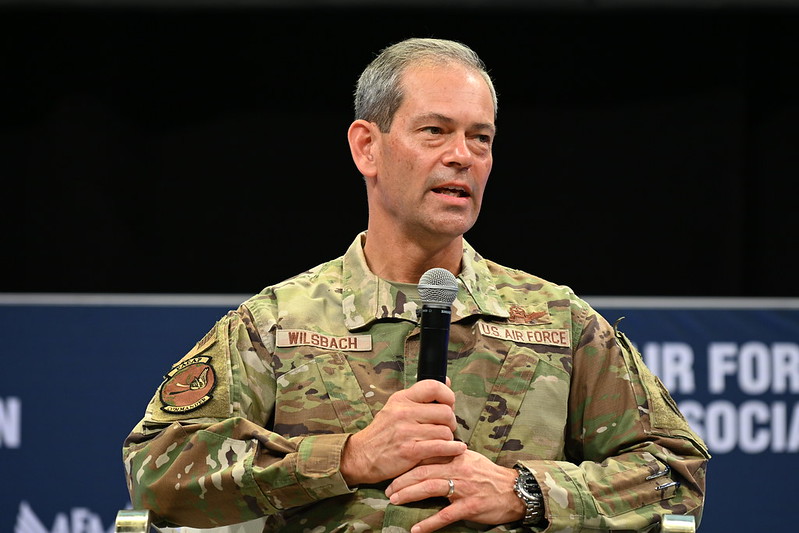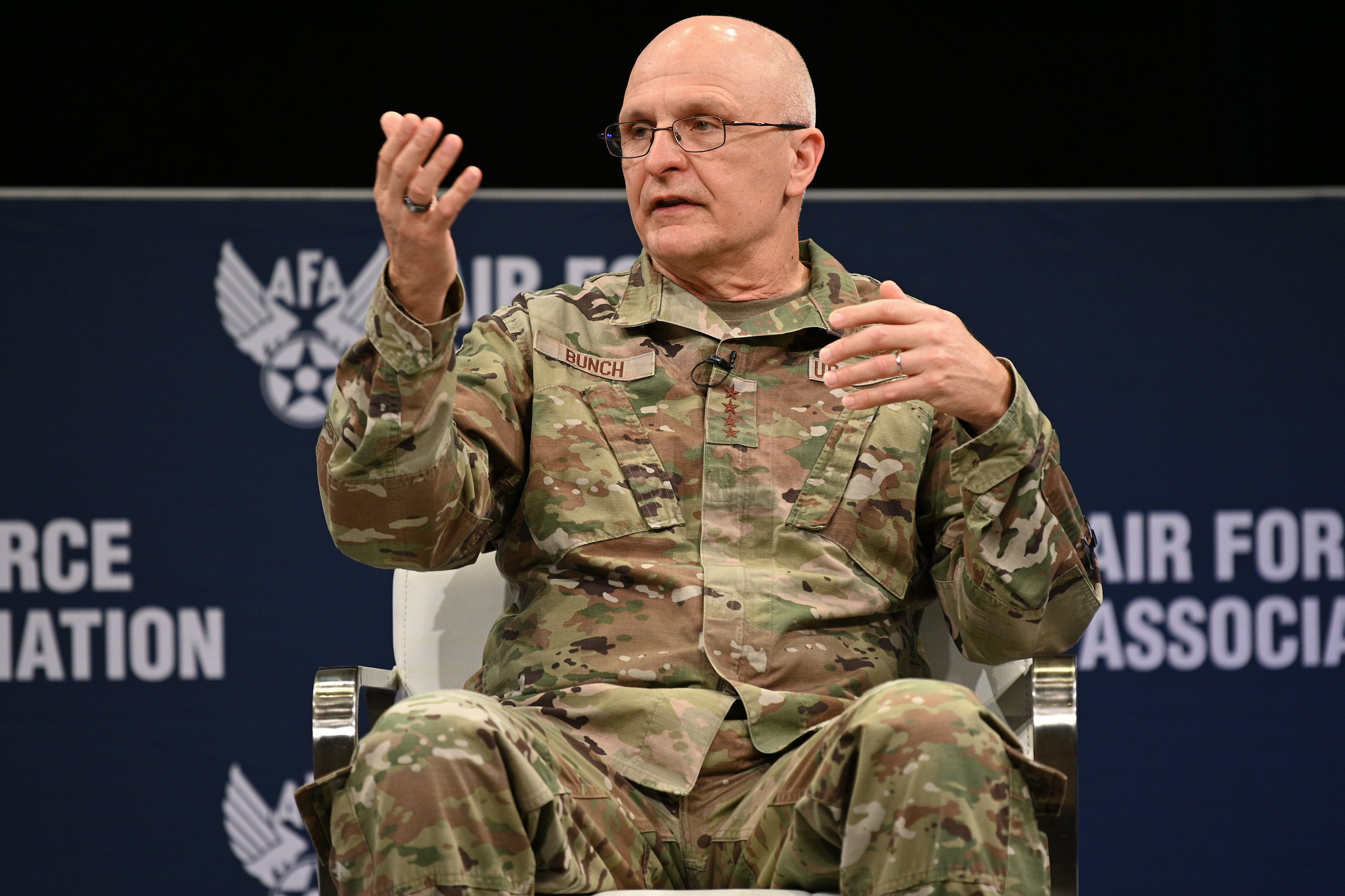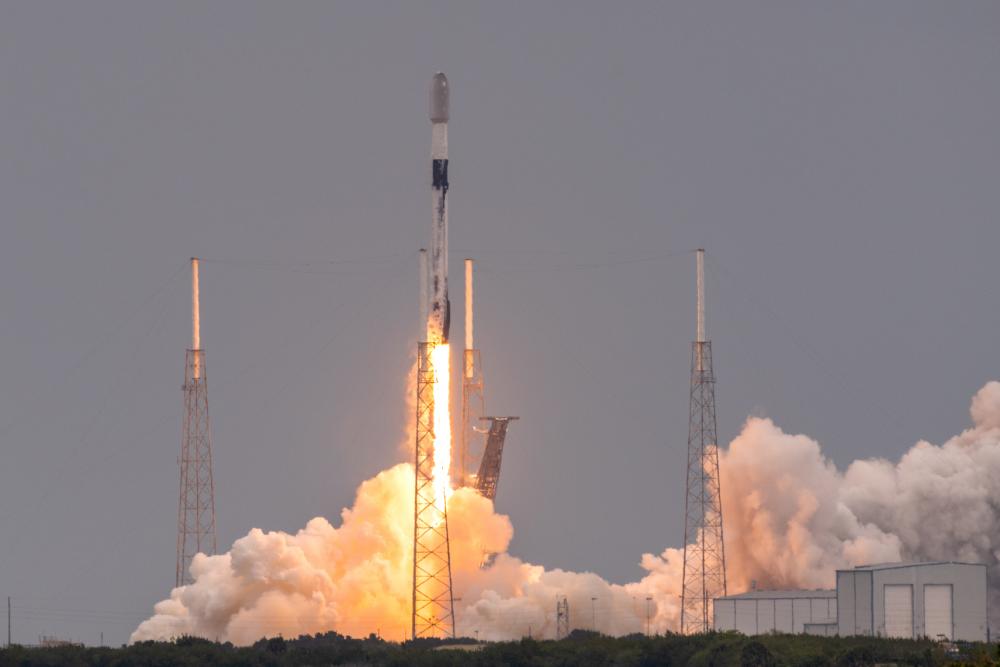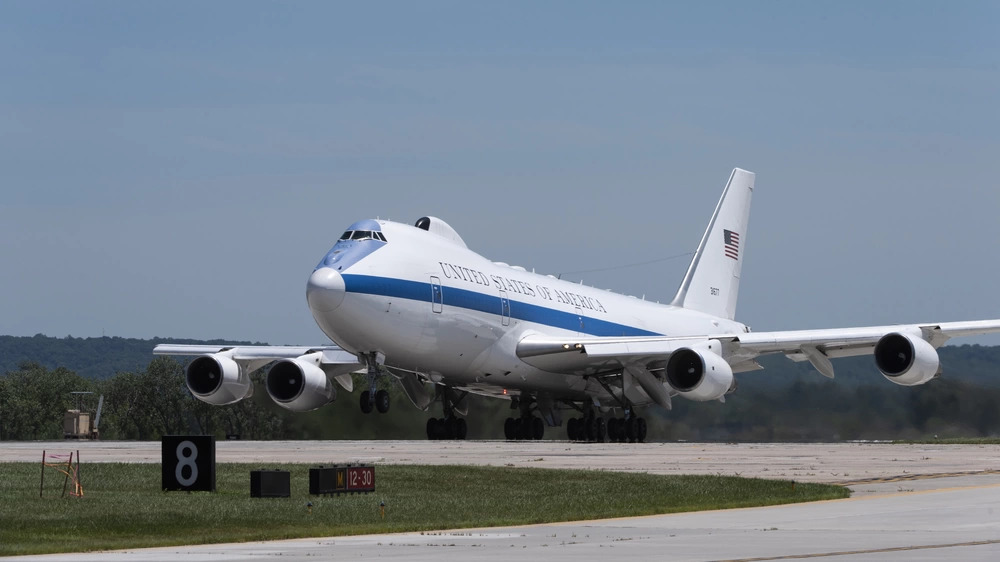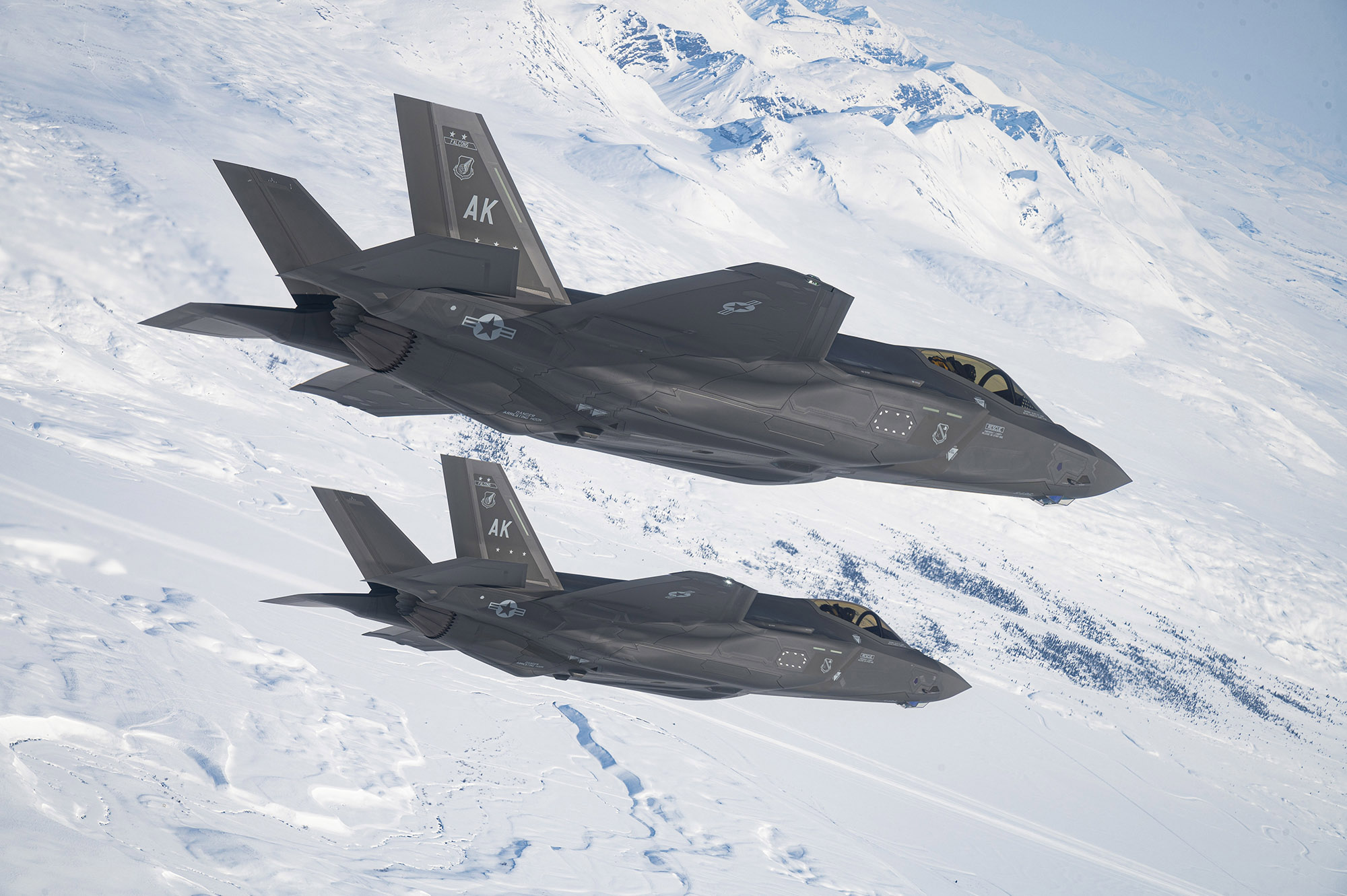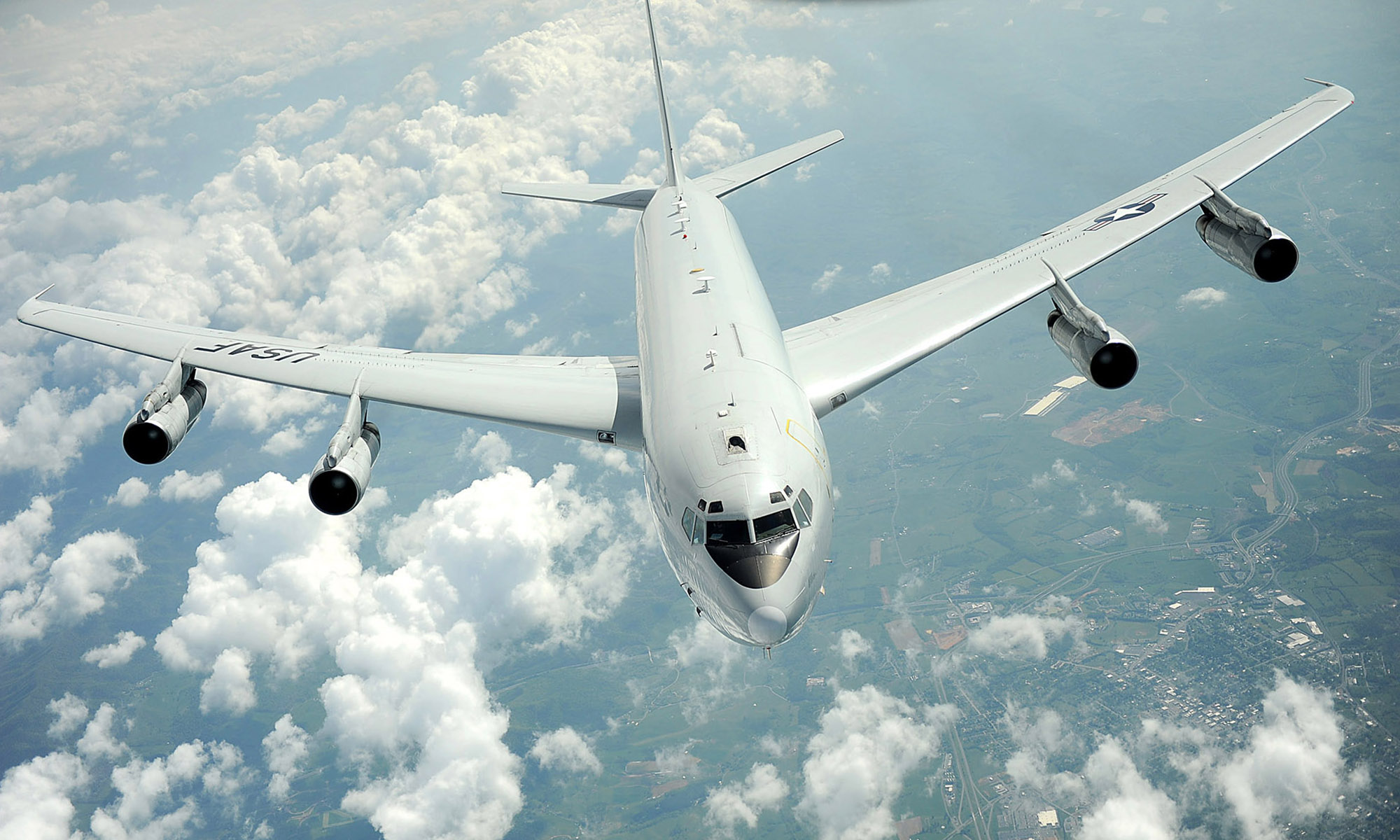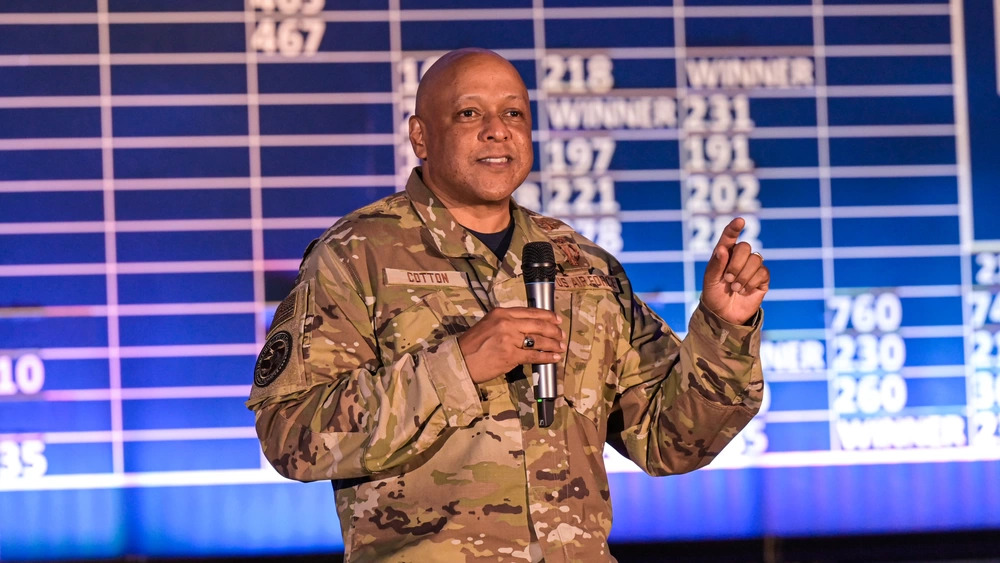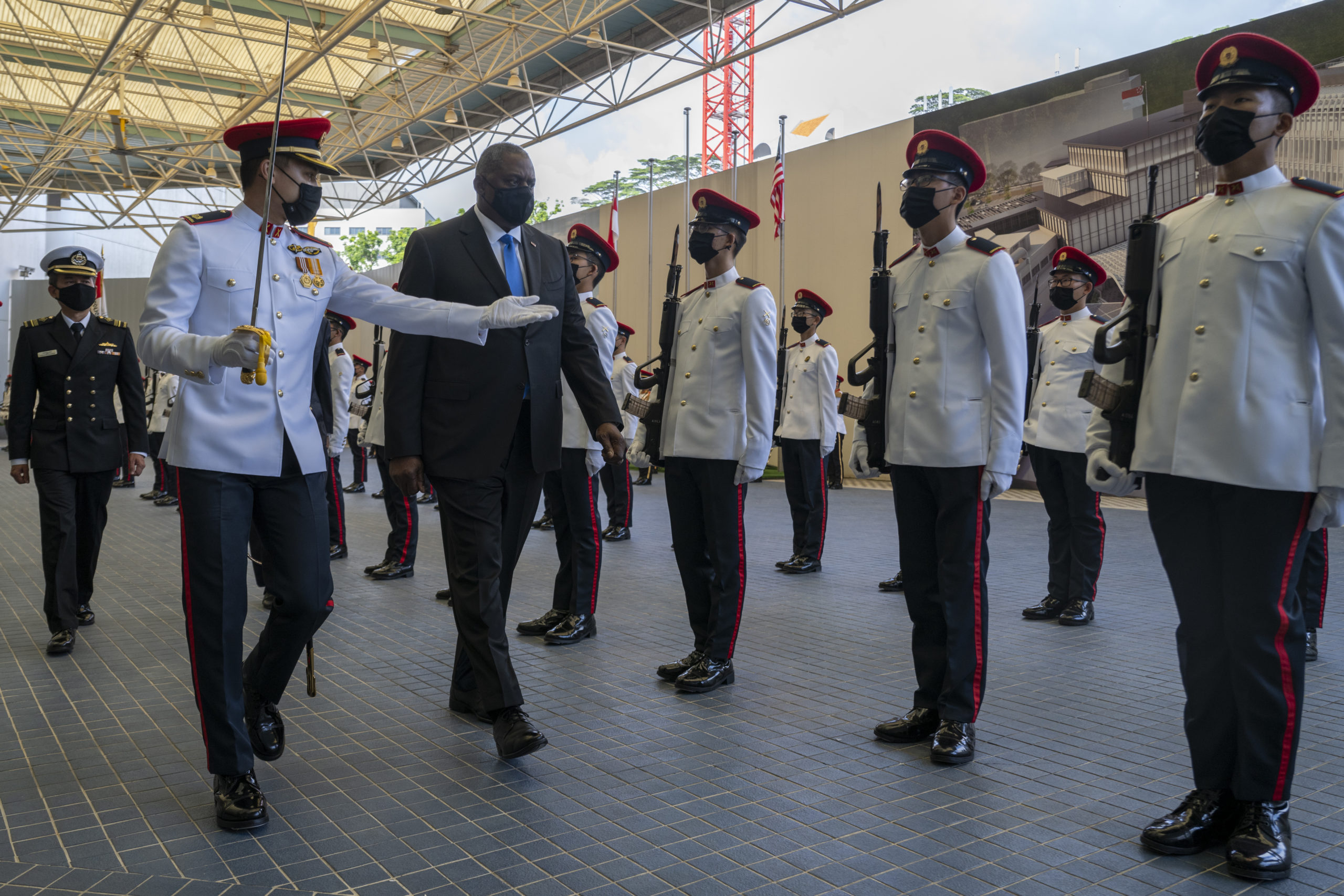JOINT BASE PEARL HARBOR-HICKAM, Hawaii—The recent barrage of ballistic missile tests by North Korea elicited a strong, “trilateral” response from the United States and Pacific allies Japan and South Korea, Pacific Air Forces (PACAF) commander Gen. Kenneth S. Wilsbach told Air Force Magazine on June 9. The show of force was necessary to retain allied unity against Chinese aggression, America’s principal concern in the theater, experts say.
“We can never look past North Korea with how unpredictable they are,” Wilsbach said during an interview at PACAF headquarters at Joint Base Pearl Harbor-Hickam, Hawaii.
“We’ve got to be ready to respond, and we are,” he added. “What was unique about that is how really trilateral it was with the Japanese as well as the Republic of Korea and the U.S.”
The North test-fired eight short-range ballistic missiles June 5, its largest test in a single day, and brought its total tests per year to 31, the largest number ever in a single year.
“They’re doing those to invoke a reaction by the United States, perhaps Japan, perhaps the Republic of Korea,” Wilsbach added.
That response came in the form of missile tests and fighter jet flights.
The United States and South Korea conducted a combined live-fire exercise June 5, firing one U.S. Army missile and seven Korean missiles into the Sea of Japan, northeast of South Korea.
The two allies also flew 20 fighter jets June 7, including South Korean F 35s, F-15s, and F-16s alongside U.S. F-16s. Separately, the United States and Japan conducted a drill with four Japanese F-15s and two American F-16s.
The most recent tests follow a string of ballistic missile launches by North Korea that began with four tests May 24 that included an intercontinental ballistic missile. In response, on May 25, the United States and South Korea test-fired Republic of Korea (ROK) Hyunmu-2 missiles using the U.S. Army’s Tactical Missile System.
Wilsbach said the continued U.S. and allied responses don’t antagonize North Korea but show unity and force.
“I’m sure that they had planned to launch those missiles well ahead of time,” Wilsbach said. “I seriously doubt that it was antagonistic from the standpoint of they saw us fly and then they launched missiles, because it takes so much planning.”
Center for Strategic and International Studies (CSIS) international security fellow John Schaus told Air Force Magazine in an interview that it is hard to get Pacific allies such as South Korea to see eye to eye with the United States on China as a threat. Demonstrating U.S. commitment to the ROK alliance helps.
“South Korea has a very real threat immediately across the border in North Korea,” Schaus said. “Much the same way we see NATO prioritizing Russia rather than China because it’s right next door, South Korea is prioritizing North Korea rather than China efforts.”
Schaus believes it’s an “open question” whether Pacific allies such as South Korea would assist the United States should conflict arise with China, all the more reason why the United States needs to show its commitment to South Korea’s security priorities.
“Korea is more complicated,” the analyst said, comparing South Korea to alliance partners Japan and Australia.
“I’d say that the new president in Korea is more reflexively pro-alliance than perhaps the last president was,” he added.
Wilsbach said the rapid and united show of force by the United States is a show of the U.S. commitment to the Pacific allies most threatened by North Korea’s aggression.
“That definitely is demonstrating resolve to the region,” he said.
